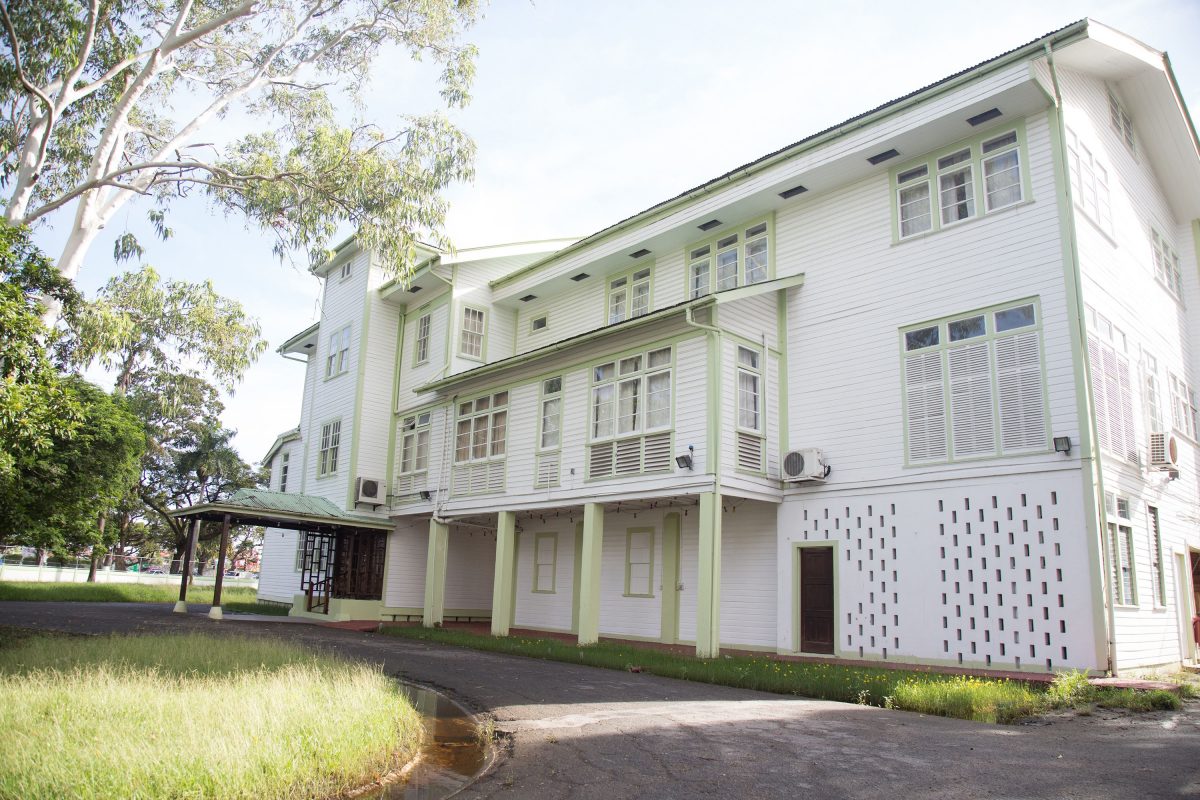The recent fire that destroyed the Brickdam Police Station—an historic building that housed the Region 4 (A) Headquarters—has implications for the safety of our National Art Collection in the wooden building, Castellani House, Guyana’s National Art Gallery. It also serves as a reminder of disastrous fires that regretfully form part of the history of Georgetown, disasters which relate to both the material and intellectual resources of our country. As a child I actually witnessed the 1945 Great Fire that destroyed many historic wooden buildings. Standing on the steps of St. George’s Cathedral, I saw a river of flames crossing Church Street from Booker’s Stores to enter the small canal. Flames that eventually enveloped the Guyana Museum, the Post Office and other buildings.
Castellani House had been the official residence of President Burnham and in 1993 Denis Williams, Director of Art, used it to house the National Collection. Before then, work had been kept in offices of the Division of Creative Arts (now the Burrowes School of Art) on Carifesta Avenue and within other Government Offices. I advised Williams that he should contact the Fire Chief to inspect the building and make recommendations for protection of the National Collection. This was done and extinguishers were placed at fire points. The Staff was also advised about steps to be taken in case of fire.
Our National Collection is one of the largest in the entire Caribbean with an impressive range of paintings, sculpture, and ceramics, by an extensive register of artists from all walks of life. It is the only collection of that size occupying a wooden building. Jamaica made the change decades ago. Barbados is about to occupy the historic Garrison hurricane-proof stone building. Other collections are in concrete structures containing the necessities for the safe storage of artwork, official and related documents, conservation and exhibition, a lecture room and one for showing films and videos as in Martinique for example. In this sense we are way behind National Collections where the care provided reflects Governmental concerns about the cultural value and importance of such collections to their developing history.
On a few occasions during my relationship to the visual arts in Guyana from 1948 to the present, I made requests to Government officials involved to consider the importance of protecting our National Collection from fire. The obvious was being stated. On one occasion I even suggested an unoccupied concrete building in High Street that could have served the purpose even if only temporarily. The result was total silence. One memorable exception to such attempts took place in recent years and involved Dr.Frank Anthony, the former Minister of Sports and Culture, who was planning the building of a National Creative Arts Centre. I was asked to present requirements for the Visual Arts Section and did comply with his request. At one time I heard that the Centre would be located in the Turkeyen area. The obvious location should be the D’Urban Park area, east of the 1763 Monument, which is easily accessible to local or foreign visitors using any means of transportation.
It is known that in studying History very little reference, if any, is made of the Creative
Arts by Historians. A recent exception is A People’s Political History of Guyana 1838 -1964, by
Kimani Nehusi, where several pages are devoted to the contribution of E.R. Burrowes and the
Working Peoples’ Art Class of 1948-62. The major concerns in history books, are about the implications and results of trade and territorial expansion by war as exemplified by the history of the British Commonwealth. Recording history is associated with writing but visual imagery has often complemented the written. Imagery can be informative, impactful and invite meaningful speculation as can be experienced by any visitor to the African American Museum in Washington D.C. Our National Collection can serve the same purpose and it is as much an archive as our National Archives in its concrete building. The National Collection deserves similar protection from fire and therefore needs very serious consideration. Its loss cannot be repaired as sea defences are, or replaced as farm animals can be. About three years ago the 200-year-old National Museum in Rio,Brazil, lost an irreplaceable collection of prehistoric and other cultural objects of priceless value not only to that country but to the world which was due to the Government reduction of funding to science and education. Our 1945 Great Fire, while not comparable, also destroyed irreplaceable objects and documents in the National Museum and the Post Office, by accident and not neglect.
Our National Collection occupies an important place in our history. Unfortunately our general population is not aware of this, as it should be, due to the absence of a well administered program with specialist teachers in Visual Education placed in primary and secondary schools. The destruction by fire of the National Collection would be an unmitigated disaster even though it does not occupy a pride of place in the national consciousness as does sports. That such a thing could take place through neglect is unpardonable, and would probably be recorded as just another fire statistic. My stating the implications of such a disaster is speculative but nonetheless has some validity. I am stressing the need to recognise the importance of protecting the National Collection. To overlook its meaning for our continued development as a nation, and by extension its contribution to the Visual Arts in the Caribbean and internationally as well, is unacceptable. My comments are not intended to be portents of disaster nor to present a dystopian view of the situation. Hopefully they can serve instead to direct levels of consciousness to the National Collection as a specific area of national importance that needs proper protection. The spirits of departed artists, especially the visionary Philip Moore, need to rest in peace and not arise to point fingers or knock on doors.





